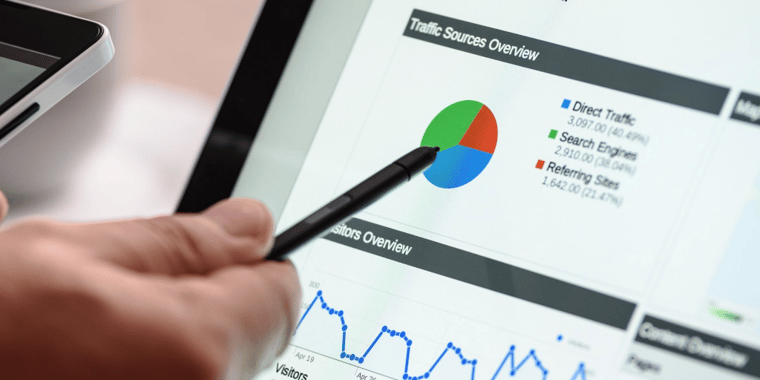For many organizations, return to work timelines are spotty at best. Yeah, the big comeback is on the horizon but right now it tends to carry a general "soon" deadline. There are several reasons for it, including the new and evolved state of the workplace which prioritizes flex-work and remote access.
Naturally, things change, but what we're seeing now is something different. Trends tend to come and go, but many of the transformations happening currently will remain. Gartner promotes 9 major HR trends emerging as a result of the modern workforce changes. Some of the prominent trends we're seeing are:
- Increased flexibility for employees allowing them to take advantage of remote work opportunities.
- More prevalent data collection related to interactions, behaviors, and environments to learn more about employee habits, engagement, and safety protocols.
- Widespread adoption of new and innovative technologies to empower the digital workplace and everyone working in it.
How is this shaping the average workplace? What are companies doing and what are we expecting to see happen for the remainder of 2023?
Industry leaders are pushing back on the race to return to the office, instead putting employees' needs first. Microsoft indefinitely delayed its return to the office for workers in the U.S, citing safety concerns and growing health risks. Other companies, like Google, Facebook, Apple, and Amazon, have followed suit, pushing return dates back until at least next year.
At this point, signs are pointing to permanent remote work and flex-work — or some form of it — being the all-encompassing future. Here's just a few prominent reasons:
- Many employers can't afford to wait any longer because the delay in reopening is costing them dearly in real estate and maintenance expenses.
- It doesn't make sense to maintain or keep a lot of large campuses or properties when no one is visiting or utilizing them.
- Despite years of changes and preparations at this juncture, there are too many organizations that don't have the technology or support structure in place to fully support their remote and hybrid workers.
Luckily, there are some ways to navigate these issues and improve the workplace experience for everyone from executive to vendor. Future offices depend on a dynamic, always-ready mobile app experience, and data is the solution.
The Power of Data in the Workplace
Data touchpoints, and digital experiences, are some of the most useful resources in a hybrid workplace. With it, workplace practitioners, managers, and operators have the power to not only navigate the workplace with ease, but also make a lasting impact on the employee experience. Here are just a few of the ways it can make a difference:
Employee Needs - Understanding what each employee needs or wants is a complicated task in its own right. At scale, occupancy data can help discern how employees are using spaces, what they're looking for, and what they need most.
Cost Management - The tools naturally help companies cut operating costs and make more meaningful purchases through actionable intel. No more excessive purchases on items no one will ever touch or use.
Productivity - Digital tools improve productivity by way of efficiency and more pleasant experiences. If you can book a desk or workspace, from the safety of your home, days before you plan to head into the office, you're more likely to follow through on all of it.
Health and Safety - The insights help HR determine and monitor capacities, social distancing requirements, and physical requirements. It can all be done by tracking which employees are allowed to book offices or desks on campus.
How do you collect the data that informs these programs? There's only one thing that communicates with people, technology, and other devices, and has access to the kind of information required. A mobile app.

Data for Return to Work Planning
In the same vein, data can empower workplace employees with the tools and information they need to successfully plan and execute a safe and smooth return to work process.
It's important to first focus on data that ensures safety protocols are in place and being followed. This includes:
- On-site visitor and capacity statistics
- Visitor or usage density to see campus utilization
- Health or testing results to see who's cleared to visit and who's not
- Desk and room tracking to see what's bookable, what's out of inventory, and what needs to be cleaned and sanitized
- Space occupancy for areas that are not bookable, but are dedicated to specific tasks - like phone booths or bathrooms
Next, site managers can use data to analyze how much spaces are being used and whether or not they are useful for a particular activity, like meetings or collaborative areas. Precisely how much of the room is utilized? How many desks or workstations are booked? This helps teams better plan for the usage of office and communal space, and create more streamlined work environments for everyone.
Moreover, it's possible to see what resources employees are using as part of their workday, and whether or not there's a high demand for certain activities or amenities. By tracking what resources are most popular, site managers can cut costs or eliminate areas that are rarely utilized. They can even introduce new areas based on user feedback.
Employee interests are tied to this, as well. Not just physically, but digitally in terms of content. What content do employees react to, what's more positive, what gets more attention? This kind of data analysis will ensure that you are crafting content that keeps employees engaged wherever they may be.

Bridging the Hybrid Work Gap: Keeping Employees Connected
Despite what's happening, or what may appear to be getting better, a careful return to office strategy is important, and for many reasons. It ensures the longevity of the business by improving employee retention through satisfaction. Employees are becoming more and more difficult to retain, and it's growing ever more costly to onboard new ones. Keeping them happy, loyal, and healthy is a high priority.
Clear communication is also key. It eliminates assumptions or confusions that can lead to conflict but also waylays potential estrangement from the workplace and colleagues. It also helps everyone retain productivity by staying in the loop, regardless of where they're spending most of their time.
Finally, it also ensures the company is making worthy investments — and helps the proper authorities track them — in such an uncertain time. Time is money, and the fewer mistakes or misguided investments that occur the better.
What's CXApp Up To?
Considering all of this, it makes sense to talk about our return to work plans. Here are the top 3 things we're considering:
- Employee Work-from-Home Status: We've surveyed employees on their current work-from-home circumstances to determine how many want or need to return to the office.
- Location Upgrade: For the office to accommodate employees that relocated, due to the pandemic, we've had to make various adjustments.
- Doing the Research: Finally, we've weighed the cost and benefits of staying fully remote versus reopening offices.
We're following the basic principle, as you should, that during all decisions, employees are the top priority. Their health, wellbeing, mental state, productivity, and satisfaction all matter and they all have a direct impact on the success of the business.
With the right employee experience platform, hybrid work is no different than in-office and on-campus environments. The trick is bridging those data touch points so that everyone has seamless, on-demand access.

.png)

.png)








